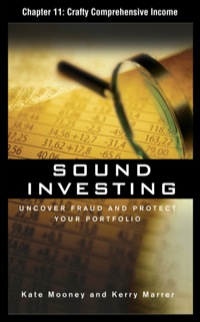





Paul Sabin organized Sabin Electronics 10 years ago to produce and sell several electronic devices on which he had secured patents. Although the company has been fairly profitable, it is now experiencing a severe cash shortage. For this reason, it is requesting a $640,000 long-term loan from Gulfport State Bank, $170,000 of which will be used to bolster the Cash account and $470,000 of which will be used to modernize equipment. The company's financial statements for the two most recent years follow: Sabin Electronics Comparative Balance Sheet This Year Last Year $ 126,000 659,000 1,020,000 34,000 1,839,000 2,084,600 $ 3,923,600 290,000 11,000 440,000 735,000 36,000 1,512,000 1,470,000 2,982,000 $ Assets Current assets: Cash Marketable securities Accounts receivable, net Inventory Prepaid expenses Total current assets Plant and equipment, net Total assets Liabilities and Stockholders Equity Liabilities: Current liabilities Bonds payable, 12% Total liabilities Stockholders' equity: Common stock, $15 par Retained earnings Total stockholders' equity Total liabilities and stockholders' equity $ $ 870,000 800,000 1,670,000 440,000 800,000 1,240,000 830,000 1,423,600 830,000 912,000 1,742,000 $ 2,982,000 $ 3,923,600 Sabin Electronics Comparative Income Statement and Reconciliation This Year $ 5.700.000 Last Year $4.770.000 Sales Cost of goods sold Gross margin Selling and administrative expenses Net operating income Interest expense Net income before taxes Income taxes (30%) Net income Common dividends Net income retained Beginning retained earnings Ending retained earnings 4,015,000 1,685,000 681,000 1,004,000 96,000 908,000 272,400 635,600 124,000 511,600 912,000 $ 1,423,600 3,590,000 1,180,000 576,000 604,000 96,000 508,000 152,400 355,600 103,000 252,600 659,400 912,000 $ During the past year, the company introduced several new product lines and raised the selling prices on a number of old product lines in order to improve its profit margin. The company also hired a new sales manager, who has expanded sales into several new territories. Sales terms are 3/10, n/30. All sales are on account. Required: 1. To assist in approaching the bank about the loan, Paul has asked you to compute the following ratios for both this year and last year: a. The amount of working capital. b. The current ratio. c. The acid-test ratio. d. The average collection period. (The accounts receivable at the beginning of last year totaled $390,000.) e. The average sale period. (The inventory at the beginning of last year totaled $640,000.) f. The operating cycle. g. The total asset turnover. (The total assets at the beginning of last year were $2,942,000.) h. The debt-to-equity ratio. i. The times interest earned ratio. j. The equity multiplier. (The total stockholders' equity at the beginning of last year totaled $1,732,000.) 2. For both this year and last year: a. Present the balance sheet in common-size format. b. Present the income statement in common-size format down through net income. Complete this question by entering your answers in the tabs below. Req 1 Req 2A Reg 2B To assist in approaching the bank about the loan, Paul has asked you to compute the following ratios for both this year and last year: a. The amount of working capital. b. The current ratio. (Round your answers to 2 decimal places.) c. The acid-test ratio. (Round your answers to 2 decimal places.) d. The average collection period. (The accounts receivable at the beginning of last year totaled $390,000.) (Round your intermediate calculations and final answers to 2 decimal place. Use 365 days in a year.) e. The average sale period. (The inventory at the beginning of last year totaled $640,000.) (Round your intermediate calculations and final answers to 2 decimal place. Use 365 days in a year.) f. The operating cycle. (Round your intermediate calculations and final answers to 2 decimal place. Use 365 days in a year.) g. The total asset turnover. (The total assets at the beginning of last year were $2,942,000.) (Round your answers to 2 decimal places.) h. The debt-to-equity ratio. (Round your answers to 2 decimal places.) i. The times interest earned ratio. (Round your answers to 2 decimal places.) j. The equity multiplier. (The total stockholders' equity at the beginning of last year totaled $1,732,000.) (Round your answers to 2 decimal places.) Show less This Year Last Year a. Working capital b. Current ratio C. Acid-test ratio d. Average collection period e. Average sale period f. Operating cycle g. Total asset turnover h. Debt-to-equity ratio i. Times interest earned ratio j. Equity multiplier days days days days days days Present the balance sheet in common-size format. (Round your answers to 1 decimal place.). Last Year Sabin Electronics Common-Size Balance Sheets This Year Assets Current assets: Cash 19.5 % Marketable securities Accounts receivable, net Inventory Prepaid expenses Total current assets 19.5 Plant and equipment, net Total assets 19.5 % Liabilities and Stockholders' Equity Liabilities: Current liabilities Bonds payable, 12% Total liabilities Stockholders' equity: Common stock, $15 par Retained earnings Total stockholders' equity 0.0 Total liabilities and equity 0.0 % 0.0 % Present the income statement in common-size format down through net income. (Round your answers to 1 decimal place.) Last Year 0.01 Sabin Electronics Common-Size Income Statements This Year Sales Cost of goods sold Gross margin 0.0 Selling and administrative expenses Net operating income Interest expense Net income before taxes 0.0 Income taxes Net income 0.0 % 0.0 0.0 0.0 0.0 %












